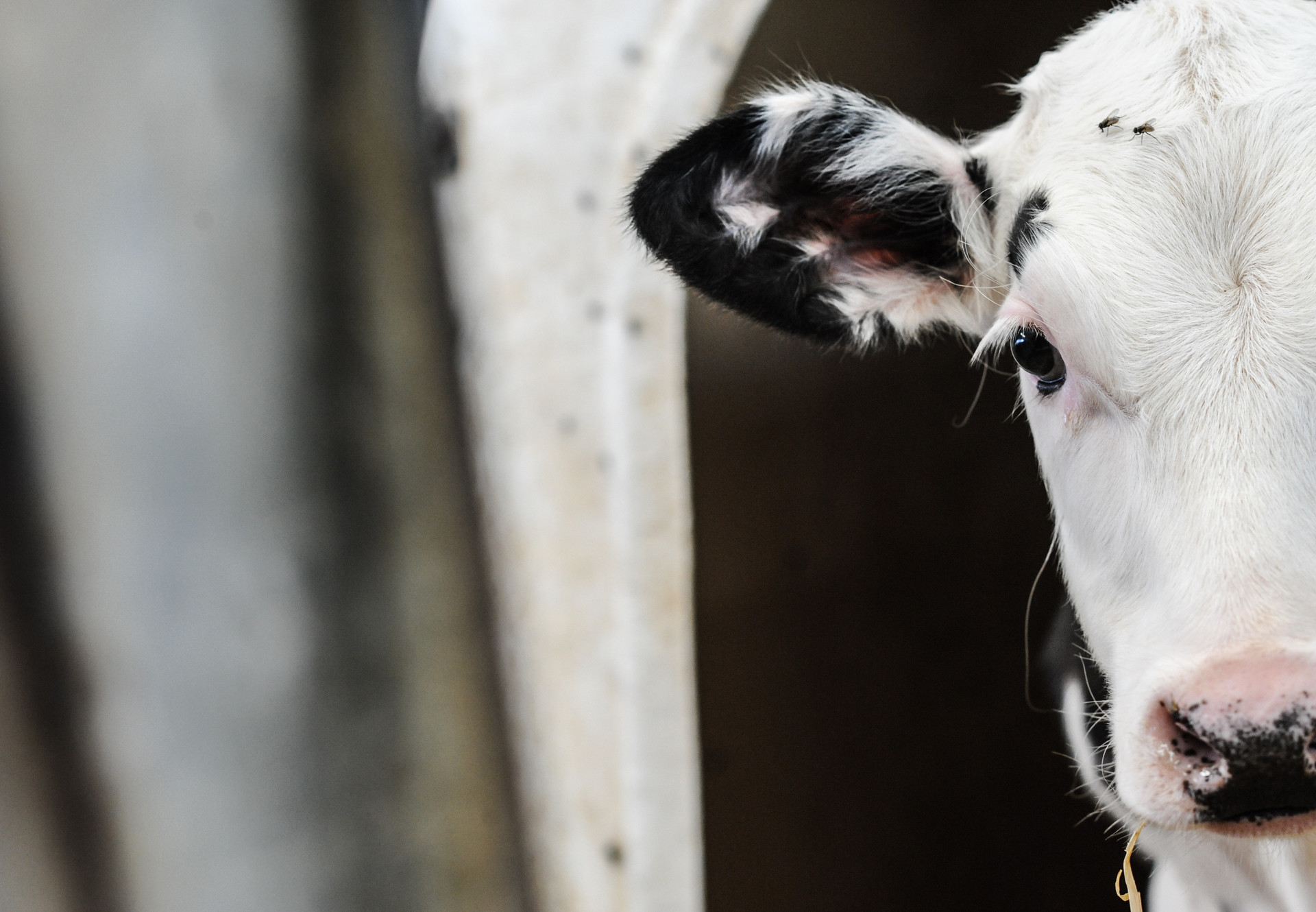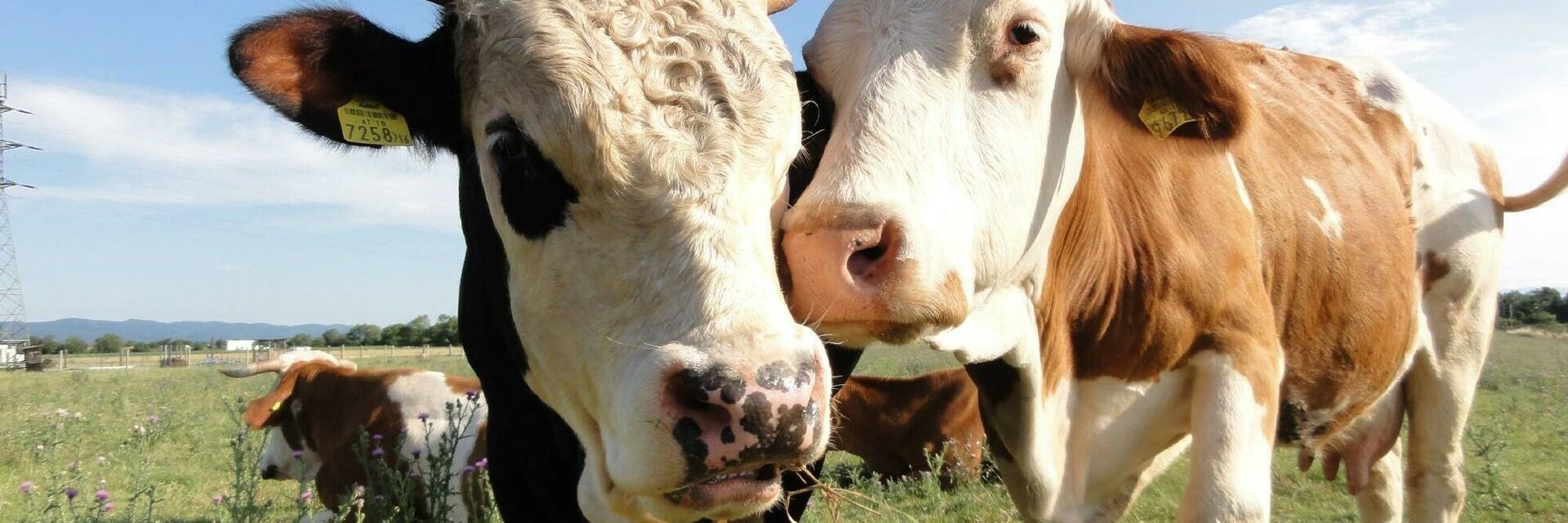
The Suffering of Calves
Male calves are by-products of the meat and dairy industry
Most of the male calves (also known as bobby calves) born in dairy husbandry systems are almost immediately separated from their mothers. They are not fed according to their needs and natural behaviour. Additionally, they are transported at a very young age (See more here) to veal- or other fattening systems, mixed with unfamiliar calves from other herds and then slaughtered. All that without ever experiencing their mother’s care. Female calves from dairy farms are raised to continue their life in the stressful cycle for dairy production.
Separation pain and force-feeding: The sad childhood/youth of calves
The task of a dairy cow is to produce a lot of milk. But she only gives milk, if she gives birth to a calf. The cow is artificially inseminated for the first time at the age of 16-18 months and then pregnant for nine months. Shortly after the birth of her first calf, the cow gives milk to be sold for (human) consumption. To sell as much milk as possible, the cow and calf are separated from each other after 24 hours and the calf is then usually given a bought-in milk substitute - a mixture of skimmed milk powder and water and is usually kept in a separated box for a few days before being transported to slaughter or saleyards.
The separation from the mother often makes the calf more susceptible to illness. Usually calves feed 6-8 times a day on their mother's udders. By separating the cow and the calf, the calf has to drink the milk from a bucket, which only happens 2 times a day. The calves therefore drink hastily and consume large amounts at once. This, and the stressful events reducing their immune response, are giving many calves a life-threatening diarrhea, resulting in an average mortality rate for calves on dairy farms of 10% or more1.
When a cow and the calf are separated so soon after birth, there is no mother-child bond established. If they are allowed to stay together for a certain time, but still weaned too early, then this can lead to serious animal welfare relevant reactions. Due to lack of child-mother-contact, behavioural disorders can occur, such as cross suckling and navel suckling (due to a calf’s intrinsic need to suckle, the calf starts to suckle other structures in the pen and also eg. the navel of another calf). This is extremely painful for the suckled calf, as it can lead to inflammation. The animals deprived of suckling possibilities may show signs of extreme mental suffering, which can lead to physical impairment, e.g. serious loss of weight (emaciation).
Mutilation
Painful interventions are carried out on calves without anaesthesia: dehorning, tail docking, branding/ear tagging, castration... the painful management procedures are generating fear, pain and distress, thus diminishing the immune system, altering brain function and the behaviour of the animals. While the physical pain ceases after some days or weeks, the behavioural changes last a lifetime. Learn more about it here.
Male dairy cow calves are worth nothing
The male calves (5-30 days) of the milk breeds are generally transported to a saleyard or abattoir at five days or older.
FOUR PAWS calls for
...the end of cruel practices:
- Calves and their mothers (or nursing cows) should stay together for at least three months, giving them the ability to form a mother-child bond and prevent behavioural disorders and separation distress
- The young animals should not be kept in isolation
- No painful procedures should be permitted, but until that can be possible:
- Castration can only be practiced with the use of anaesthesia and analgesia, until the age of maximum of 42 days, by an experienced veterinarian and must also be followed by post-operative pain alleviations
- Calves should not be disbudded - herds should be kept horned or bred genetically hornless; until then, for all methods and ages at which disbudding is carried out, pain relief should be used
- Fulfillment of basic needs
Source
2) https://www.nature.com/articles/s41598-019-56798-w
3) https://www.sciencedirect.com/science/article/pii/S002203021000319X
4) https://www.nrcresearchpress.com/doi/abs/10.1139/cjas-2019-0031#.XtX5P8BCTIU
5) https://www.ndr.de/nachrichten/Die-Ramschkaelber,sendung514264.html




